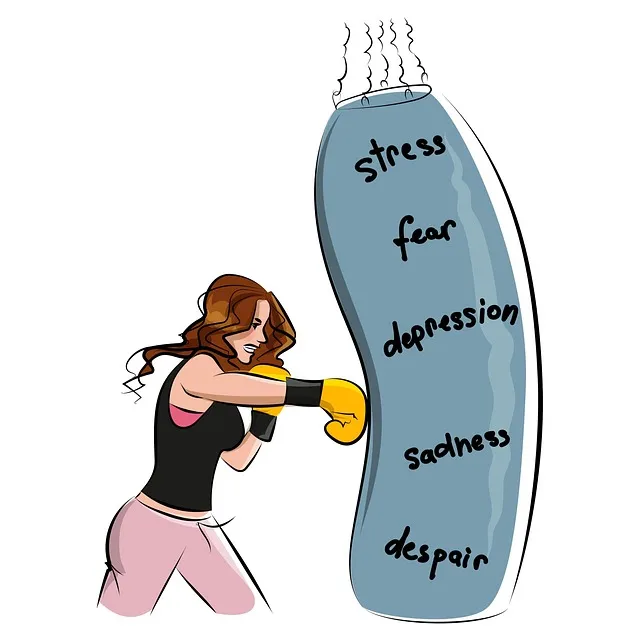In today's digital age, mental wellness apps inspired by institutions like the Englewood Kaiser Permanente mental health center and its flexible visiting hours are transforming care accessibility. These apps offer personalized resources, interactive tools, and communities to address diverse emotional needs, reducing stigma around mental illness. Utilizing evidence-based practices, intuitive design, and regular feedback, developers create digital experiences mirroring comprehensive on-site care, ultimately promoting inclusive mental wellness support.
In today’s fast-paced world, mental wellness app development has become a vital tool to support individuals’ well-being. With increasing awareness about mental health, apps offer accessible and personalized resources. This article explores the growing importance of these applications, focusing on their impact at the Englewood Kaiser Permanente Mental Health Center. We’ll delve into key features, the development process, and effective engagement strategies, highlighting how these apps enhance access to care, particularly during visiting hours at this renowned center.
- Understanding the Need for Mental Wellness Apps
- Features and Components of Effective Mental Health Apps
- Development Process: From Concept to Launch
- Integrating Engagement Strategies for User Success at Englewood Kaiser Permanente Mental Health Center
Understanding the Need for Mental Wellness Apps

In today’s fast-paced world, mental wellness has emerged as a paramount concern, leading to a growing demand for accessible and effective solutions. Mental health issues affect individuals across various demographics, with many seeking support beyond traditional therapy settings. This is where mental wellness apps step in, offering a convenient and often affordable alternative. The need for these applications is evident, especially considering the increasing recognition of mental health as a cornerstone of overall well-being.
Englewood Kaiser Permanente mental health center visiting hours highlight the importance of accessible care, inspiring innovative approaches like app development. These digital tools cater to diverse needs, from providing emotional intelligence resources and Mental Health Education Programs Design to fostering communities that reduce the stigma surrounding mental illness. By leveraging technology, mental wellness apps have the potential to revolutionize support systems, making them more inclusive and convenient for those in need.
Features and Components of Effective Mental Health Apps

Effective mental health apps should incorporate a diverse range of features to cater to various aspects of emotional and psychological well-being. One key component is personalized content that adapts to users’ unique needs, whether it’s guiding them through meditation practices, offering cognitive behavioral therapy techniques, or providing resources for stress management. Many successful apps also include interactive tools such as mood trackers, journaling prompts, and self-care checklists, empowering individuals to actively engage in their mental wellness journey.
Additionally, social integration has proven valuable for fostering a sense of community and support. Features like secure chat functions or online forums allow users to connect with peers facing similar challenges, encouraging open dialogue and sharing of coping strategies. Incorporating elements of Social Skills Training within these platforms can enhance meaningful interactions and contribute to improved emotional regulation. Regular updates with relevant articles, research findings, and expert advice from Englewood Kaiser Permanente mental health center visiting hours experts further enrich the user experience, positioning the app as a comprehensive resource for maintaining and enhancing mental wellness.
Development Process: From Concept to Launch

The development of a mental wellness app begins with a clear vision and understanding of the target audience’s needs. Inspired by the resources and expertise found at renowned centers like Englewood Kaiser Permanente mental health center visiting hours, developers must first define the app’s purpose and functionality. This involves extensive research into existing mental health tools, engaging with potential users to gather insights, and identifying gaps in the market that the app can fill.
Once conceptualized, the development process involves designing an intuitive user interface, integrating evidence-based practices for stress management and burnout prevention strategies for healthcare providers, and incorporating features tailored to specific mental illness stigma reduction efforts. Regular testing, feedback collection, and iterative improvements are crucial to ensure the app meets high standards of quality and effectiveness. The ultimate goal is to create a seamless digital experience that promotes mental wellness and accessible support for users wherever they are, just as Englewood Kaiser Permanente provides in its physical setting.
Integrating Engagement Strategies for User Success at Englewood Kaiser Permanente Mental Health Center

Integrating engagement strategies is a key aspect of ensuring user success at Englewood Kaiser Permanente Mental Health Center. This approach leverages Mind Over Matter principles to create a supportive environment that fosters recovery and wellness. By incorporating cultural sensitivity in mental healthcare practice, the center caters to diverse patient needs, making them feel understood and valued. This not only enhances therapeutic outcomes but also encourages regular visits for ongoing mood management support.
Effective engagement strategies include personalized treatment plans, peer support groups, and digital tools tailored to individual preferences. These initiatives ensure patients actively participate in their mental health journey, leading to improved adherence and better long-term results. Additionally, the center’s flexible visiting hours accommodate different patient schedules, making it more accessible for those seeking care.
Mental wellness apps have become essential tools in addressing the growing demand for accessible and personalized mental healthcare. By integrating various features like mood tracking, mindfulness exercises, and therapeutic techniques, these applications offer a convenient and discrete way to support users’ mental well-being. The development process, as highlighted by the case study at the Englewood Kaiser Permanente Mental Health Center, emphasizes the importance of user engagement strategies to ensure long-term success. Understanding the specific needs of target audiences and incorporating effective design elements can lead to innovative solutions that make a tangible difference in people’s lives, even beyond the walls of traditional healthcare facilities, such as those visiting the Englewood Kaiser Permanente mental health center during its operational hours.



